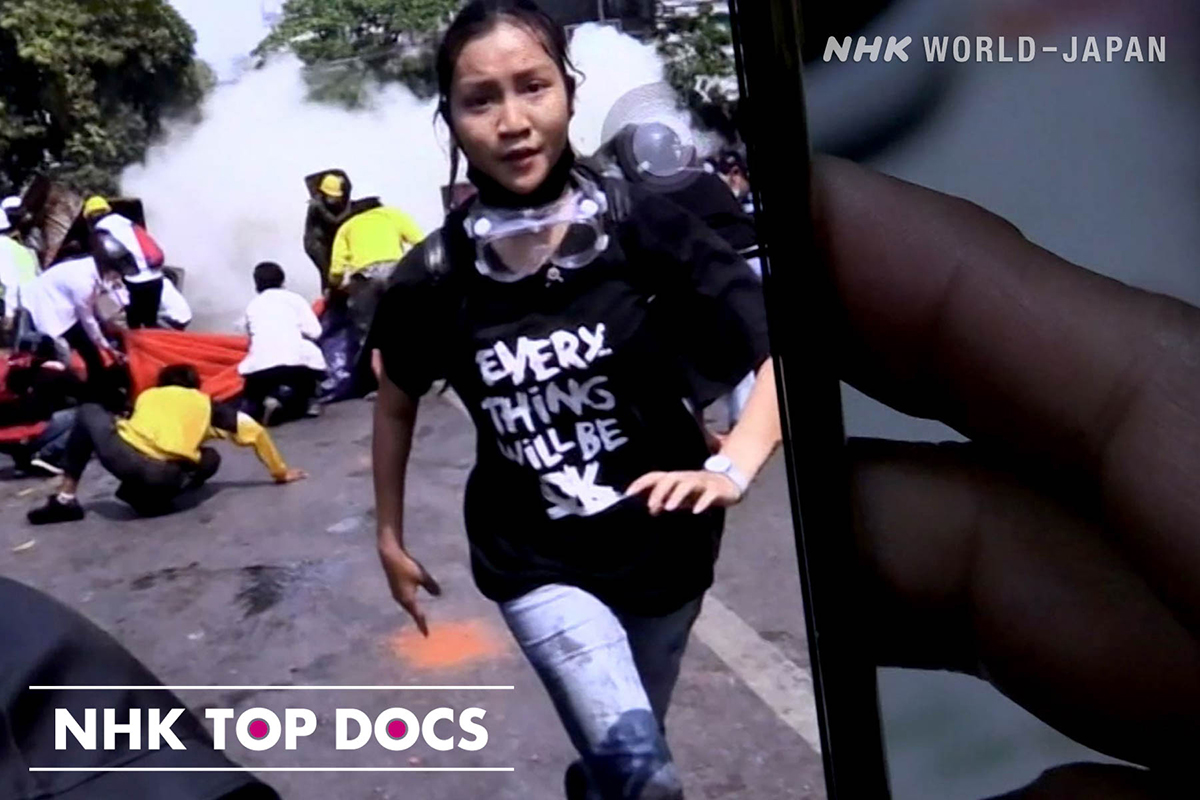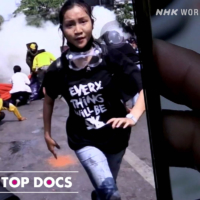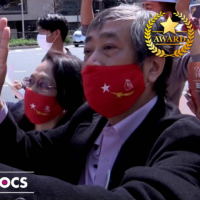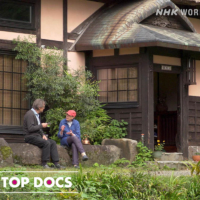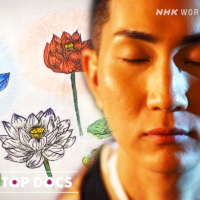Documentaries explore, preserve and publicize history in immersive ways so that we can learn from it. That’s why NHK Top Docs, a free streaming service provided by NHK World-Japan, is such an important project. With all the resources of Japan’s public broadcaster behind it, NHK Top Docs introduces groundbreaking monthly content, some of which has already won accolades around the world, including the Intermedia-Globe Gold Award for “Inferno: Letters from Auschwitz,” the Arts Bronze World Medal for “Creations from the Obscure,” and the Galaxy Award for “Inasa: Whispers on the Wind.” Yet even among such a distinguished group, three other documentaries stand out.
‘Myanmar Coup: Digital Resistance’
This record and analysis of efforts by anti-coup protesters in Myanmar has won the Japan Newspaper Publishers and Editors Association Award and was an International Emmy nominee for best documentary this year. In “Myanmar Coup: Digital Resistance,” NHK teams up with Amnesty International and various experts to investigate how Myanmar citizens risked their lives and utilized online and digital resources during the first two months of the military’s takeover of the country.
In the early days of the anti-coup protests, the internet was used to alert demonstrators about the location of security forces. One programmer even created the Way Way Nay app listing companies linked with the junta, encouraging people to boycott them as less money going to the military could mean fewer bullets going into the people of Myanmar.
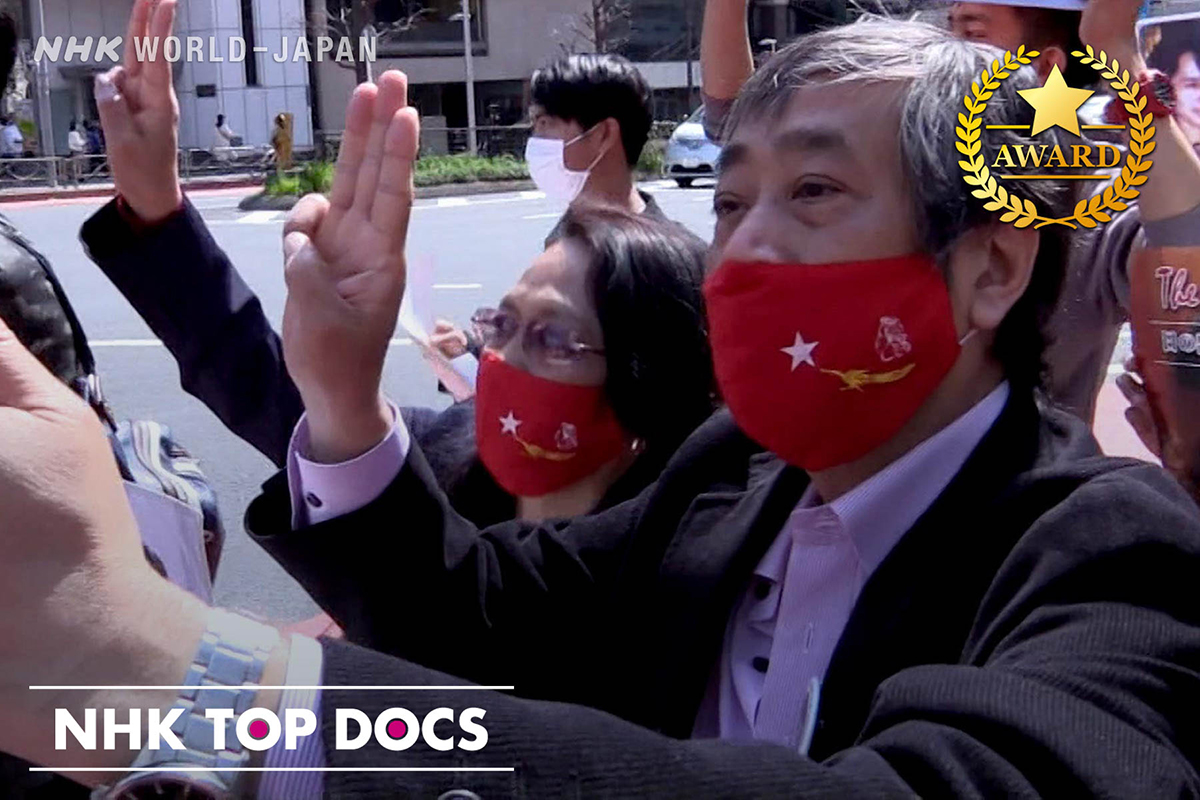
Equally important, though, was the use of mobile phone images and data to fight government propaganda, like providing proof that the military was responsible for the death of a 19-year-old protester. The documentary is ultimately a story about the will of Myanmar’s younger generation, which was lucky enough to grow up during the country’s democratic period after 50 years of oppressive military rule and isn’t willing to let it go without a fight. The documentary expertly captures their struggle during the early, chaotic days of this new dark chapter of Myanmar’s history.
‘Karl and Tina: Embracing Village Life in Japan’
German architect Karl Bengs and his wife, Tina, live in picturesque Taketokoro in Niigata Prefecture, also known as the Miracle Village. Once a depopulated, forgotten settlement, Taketokoro has been reborn thanks to the efforts of the Bengs, who’ve taken it upon themselves to breathe new life into the village’s abandoned traditional Japanese houses, making a home in one where they plan to spend the rest of their lives.
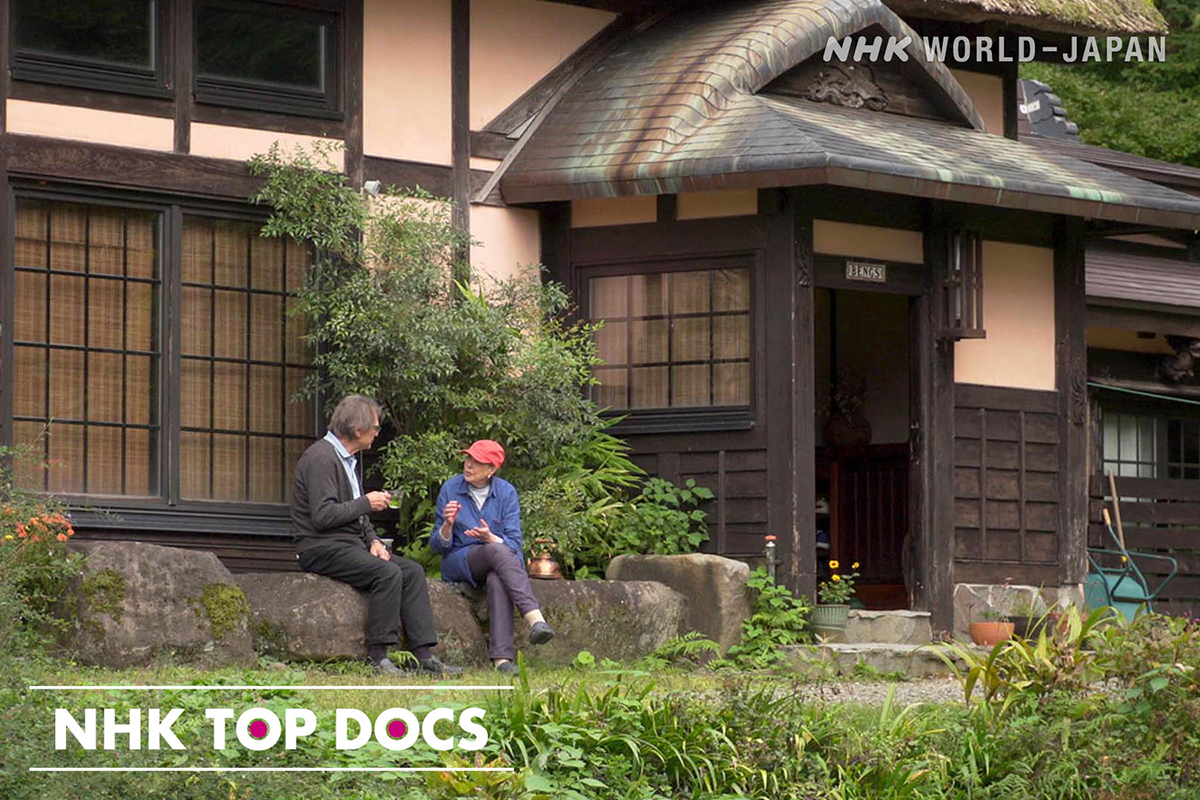
In this story of one summer in Taketokoro, we get to know the couple and their charming home that is a mix of Japanese and Western sensibilities. Surrounded by rolling green hills, the 120-year-old thatched-roof residence has become a symbol of the rebirth of Taketokoro, attracting new families to this idyllic corner of Japan that Tina Bengs has come to call “paradise.”
‘A Monk Who Wears Heels’
When he was young, Kodo Nishimura struggled for a long time with the question of his sexuality but found an unexpected ally in Buddhism. Citing a sutra saying that each flower must shine with its own colors, the certified monk, LGBTQ activist and trained makeup artist has embraced fully who he is and is sharing this revelation, and the story of how he got there, with the world.
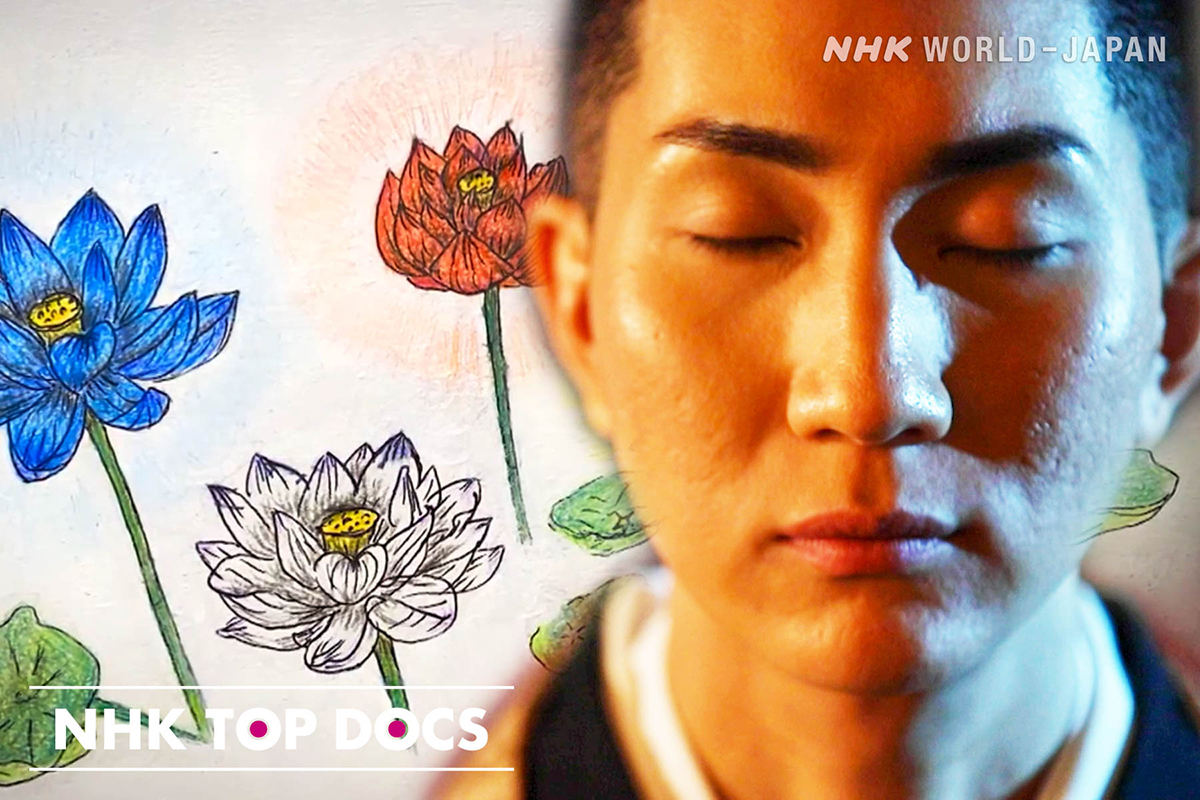
Selected as a “Next Generation Leader” by Time magazine in 2021, Nishimura, with his nonconformist, fashionable clothes, may not be the typical image of a Buddhist monk, but that is one of the things he wants the world to question. And isn’t that the true essence of Buddhism? After all, are not koans — questions meant to incite doubt in the mind — one of the pillars of Buddhist study? Come join Nishimura on this thought-provoking journey through identity, religion, makeup and fashion.
Making a good documentary film is about more than just letting nonactors tell their stories. It’s an art of carefully putting together various perspectives and facts to create a multifaceted snapshot of the real world that can change the way we think about life.
People can visit the Top Docs website to watch such documentaries for free. But it is important to keep in mind that each video is available for a limited time only.
To watch these documentaries via video on demand, visit NHK TOP DOCS’ official website. To watch regular broadcasts, visit https://www3.nhk.or.jp/



